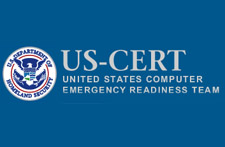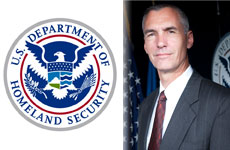Hubbard Radio Washington DC, LLC. All rights reserved. This website is not intended for users located within the European Economic Area.
Technology
-
Randy Vickers, head of U.S. CERT, discusses cybersecurity challenges in the government. December 2, 2010
December 02, 2010 -
DHS CIO Richard Spires tells host Jason Miller about his agency\'s data center consolidation efforts and where the government is headed next. December 2, 2010
December 02, 2010 -
Increased reliance on the internet, networked systems, and connectivity creates opportunities for cyber attackers to disrupt government operations, as well as U.S. critical infrastructure.
December 02, 2010 -
Hackers have unleashed a new pair of schemes that demand ransom for access to your files.
December 02, 2010 -
Kevin Paschuck of RightNow Technologies discusses the cloud and what could come next for federal agencies. November 30, 2010
December 01, 2010 -
The contract could be worth $6 million over four years. GSA said it wants Unisys to replace several different versions of IBM\'s Lotus Notes and Domino software.
December 01, 2010 -
POPVOX is a new online tool that sorts through all the feedback that goes to Congress.
December 01, 2010 -
Preview of Federal Security Spotlight with Randy Vickers, director of the US Computer Emergency Readiness Team or CERT.
December 01, 2010 -
CSO Online reports on a study that found most people are confident in their understanding of their organization\'s cyber policy, even though they have not receiving IT training.
December 01, 2010 -
The VA launches online tools to allow vets to compare VA hospitals.
December 01, 2010 -
New sensors that can be worn or ingested by warfighters will be used by pararescuemen and other medical technicians to remotely determine a soldier\'s health status. The Battlefield Automatic Life Status Monitor, or BALSM, is being developed in coordination with the Air Force Research Lab. The devices provide remote physiologic monitoring for triage, rescue or recovery, as well as a health status history over time for each person. A primary sensor measures the amount of oxygen in the blood and estimates heart rate and respiration. The other sensor is a wireless capsule that when ingested, measures core body temperature. The information is sent to medics through a radio receiver and monitoring software to a computer. Medics can even be notified if a soldier is suffering from a condition such as dehydration or hypothermia before they do.
December 01, 2010 -
Small businesses interested in exporting now have a new online tool to help them tap into the global marketplace to grow their business. Developed by the U.S. Department of Commerce and the Small Business Administration, Six Steps to Begin Exporting is the latest tool in the National Export Initiative toolbox to help entrepreneurs begin exporting. The six-step process begins with a self-assessment to help potential exporters gauge their readiness to successfully engage in international trade. This joint effort is part of several activities by federal agencies to support President Obama\'s National Export Initiative, which calls for doubling U.S. exports and supporting 2 million jobs over the next five years. So far this year, U.S. exports have increased nearly 18 percent compared to the same period in 2009.
December 01, 2010 -
The National Museum of the U.S. Air Force has launched an interactive 360-degree virtual tour. Users now have access to lecture series and audio tour podcasts, downloadable maps of the museum and panoramic views. From their computers, history buffs can walk by JFK\'s Air Force One or the Presidential Gallery at the Museum. Users can navigate a virtual map of a little less than half of the museum and view its exhibits through high-definition, panoramic photos. The completed tour will be rolled out in phases in coming months. The first phase is complete and includes interactive capabilities for the Air Park and Memorial Park. When completed, the entire museum will be accessible through 92 high-definition panoramic \"nodes.\" You\'ll find it at:
December 01, 2010 -
For decades, scientists have been searching for the fundamental biological secrets of how eating less extends a lifespan. It\'s been well documented in species ranging from spiders to monkeys that a diet with consistently fewer calories can dramatically slow the process of aging and improve health in old age. But how such a diet acts at the most basic level to influence metabolism and the decline of tissues and cells has largely remained a mystery. Now, team of scientists from the University of Wisconsin describe a molecular pathway that is a key determinant of the aging process. The study focused on an enzyme known as Sirt-3. The finding not only helps explain the events that contribute to aging, but also provides a rational basis for devising interventions, including drugs that may slow aging.
December 01, 2010
ASK THE CIO

THURSDAYS @ 10 & 2 p.m.
Weekly interviews with federal agency chief information officers about the latest directives, challenges and successes. Follow Jason on Twitter. Subscribe on Apple Podcasts or Podcast One.







